How to Choose the Right Trail Running Shoes for Your Terrain
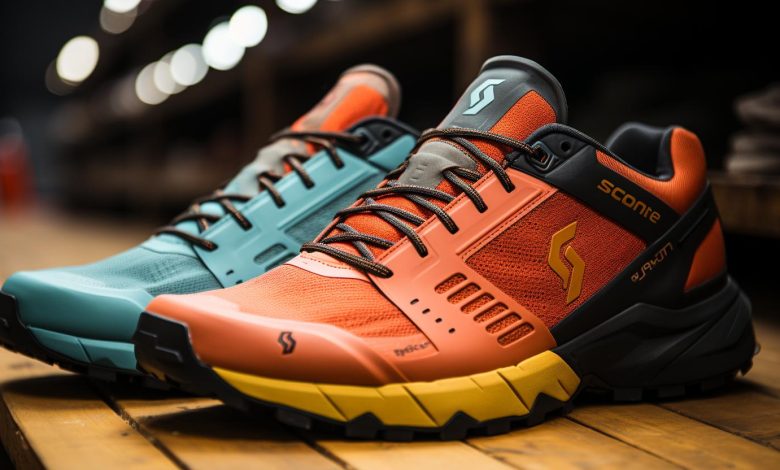
If you’re ready to hit the trails and conquer your next adventure, it’s time to find the perfect pair of trail running shoes.
But with so many options out there, how do you choose the right ones for your terrain?
Don’t worry, we’ve got you covered. In this article, we’ll walk you through everything you need to know about selecting trail running shoes that will keep you comfortable and confident on any type of trail.
So lace up those sneakers and let’s get started!
Understanding the Different Types of Trails

Before you hit the trails, it’s important to understand the different types of terrain you may encounter. Trail running shoes are specially designed to provide grip and traction on various surfaces, ensuring your safety and performance while out on the trails.
When it comes to trail running shoe grip on different terrains, there are a few key factors to consider. For rocky or technical terrains, look for shoes with aggressive lugs that can dig into uneven surfaces and provide stability. These shoes typically have a sticky rubber compound that enhances traction on slippery rocks or loose gravel.
On the other hand, if you’ll be running on muddy or soft terrains, opt for shoes with wider spaced lugs that prevent mud from getting stuck in between them. This will help maintain traction and prevent slippage.
Choosing the right shoe cushioning for trail running is equally essential. Cushioning provides impact protection and comfort during long runs. If you prefer a more responsive feel, go for shoes with minimal cushioning. However, if you’re looking for maximum shock absorption and support, choose shoes with ample cushioning in the midsole.
Understanding these aspects of trail running shoe grip on different terrains and choosing the right shoe cushioning will ensure an enjoyable and safe experience as you tackle any trail adventure.
Factors to Consider When Choosing Trail Running Shoes
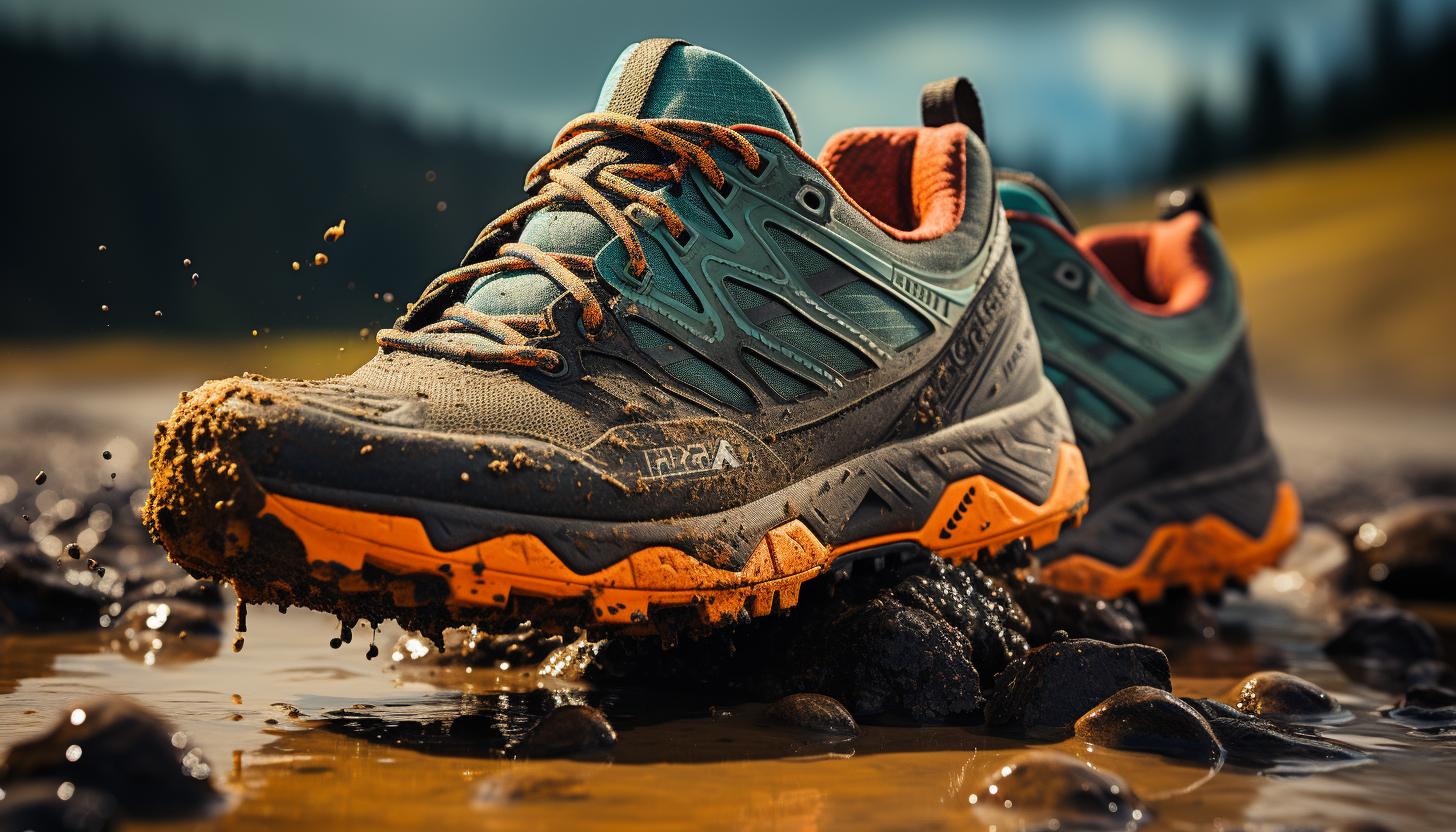
When picking out trail running shoes, it’s important to take into account various factors such as the type of terrain you’ll be navigating. One key consideration is preventing blisters while trail running. Blisters can be painful and hinder your performance, so choosing the right shoes can make a big difference. Look for shoes with a snug fit that prevent excessive movement and rubbing. Additionally, consider moisture-wicking materials that help keep your feet dry and reduce friction.
Another crucial factor to consider is the importance of proper traction on trail running shoes. Different terrains require different types of traction. For example, if you’ll be running on muddy or slippery trails, look for shoes with deep lugs that provide excellent grip in those conditions. On rocky or technical terrain, a more aggressive outsole will give you better stability and control.
To further prevent blisters, wear moisture-wicking socks made from synthetic materials or merino wool to help keep your feet dry during long runs. It’s also important to break in your new shoes gradually before hitting the trails for an extended period.
Trail Running Shoe Features for Different Terrains
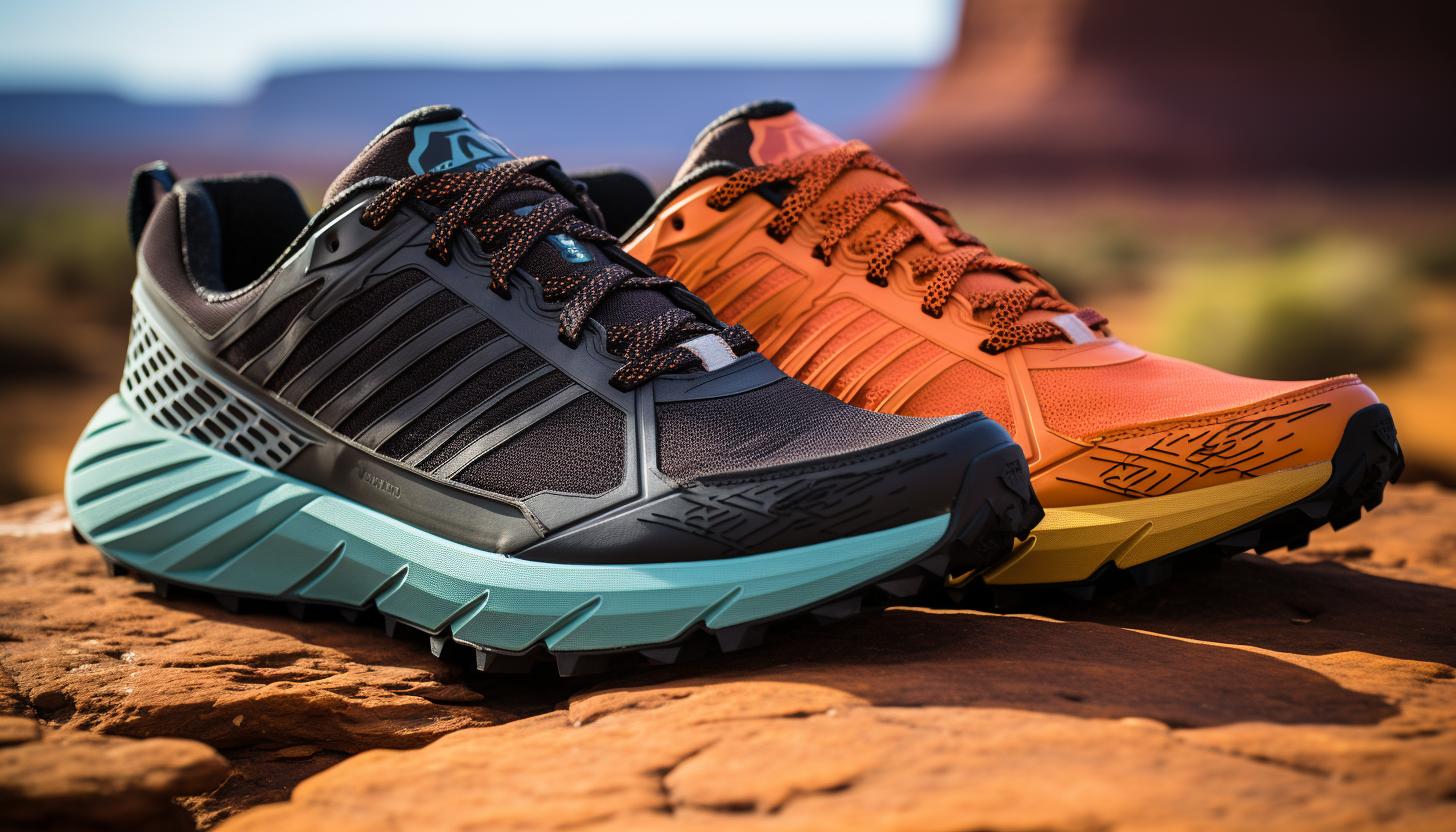
For optimal performance on different terrains, consider the features of trail running shoes such as traction and durability. When it comes to choosing the right trail running shoes for rocky terrain, there are a few key features you should look out for:
– Rock plate: A rock plate is a protective layer located between the midsole and outsole of the shoe. It helps to shield your feet from sharp rocks and uneven surfaces, providing added protection and stability.
– Toe bumper: A toe bumper is an extra layer of rubber or synthetic material that protects your toes from stubs and impacts. This feature is especially important when navigating rocky trails where tripping hazards are common.
– Aggressive tread pattern: Look for trail running shoes with deep lugs and multidirectional patterns. These will provide excellent traction on rocky terrain, ensuring you stay stable and secure with every step.
– Protective overlays: Shoes with durable overlays around high-wear areas like the toe box and sides offer enhanced durability. This is crucial when tackling rocky terrain, as these areas tend to take a beating from debris and sharp edges.
When it comes to muddy tracks, there are specific features you should consider:
– Water-resistant upper: Look for shoes made with water-resistant materials or those that have been treated with a waterproof coating. This will help keep your feet dry in wet conditions while preventing mud from seeping into your shoes.
Tips for Properly Fitting Trail Running Shoes
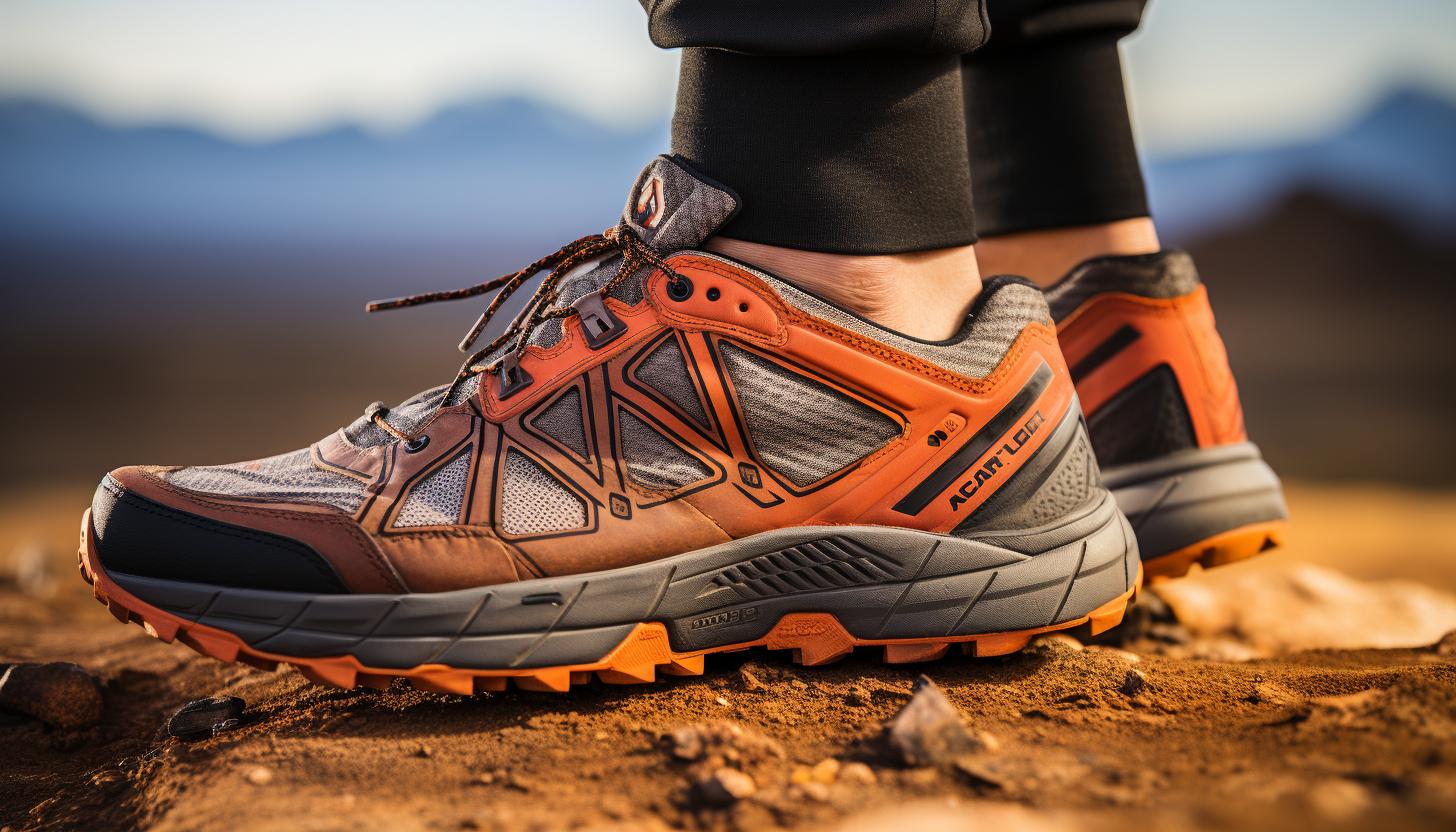
To ensure a proper fit for your trail running shoes, it’s important to try on different options and take the time to find the right size and comfort level. Choosing the right size is crucial because a shoe that is too big can cause blisters and discomfort, while one that is too small can lead to pain and even toenail damage.
When trying on trail running shoes, make sure there is enough room in the toe box for your toes to splay naturally. You should also consider the width of the shoe to ensure a snug but not tight fit.
In addition to size, you should also pay attention to the materials used in the construction of your trail running shoes. The upper material should be breathable and durable, providing protection from debris while allowing air circulation to keep your feet cool. Look for shoes with mesh or synthetic uppers as they tend to be more lightweight and breathable compared to leather.
Transitioning into maintaining and extending the lifespan of your trail running shoes, it’s important to clean them regularly after each run by removing dirt and mud using a soft brush or cloth. This will help prevent premature wear and tear, ensuring that you get the most out of your investment in quality trail running shoes.
Maintaining and Extending the Lifespan of Your Trail Running Shoes
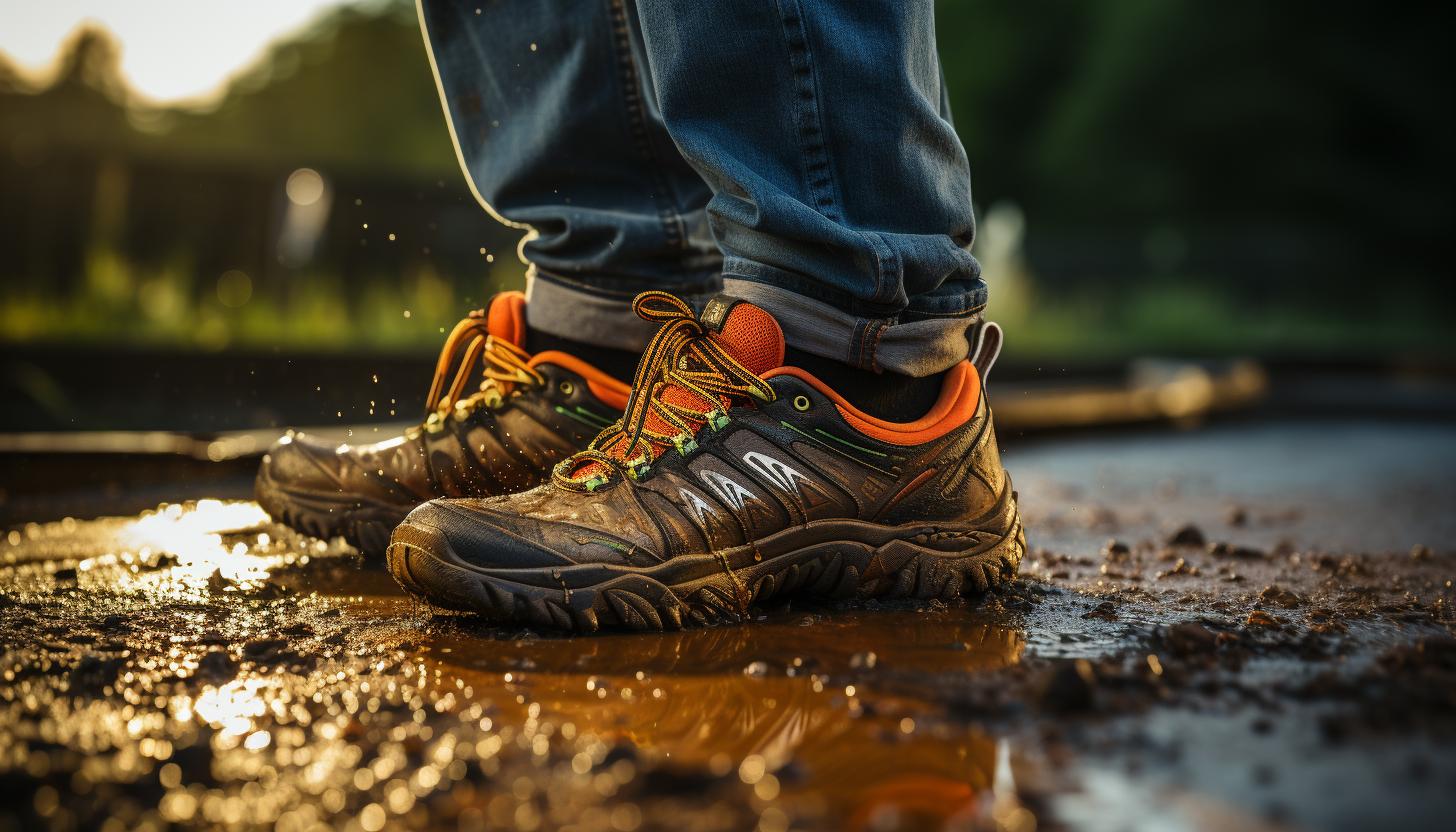
Make sure you regularly clean your trail running shoes after each run to prevent premature wear and tear. Proper cleaning and care is essential for prolonging the durability of your trail running shoes.
Here are some tips to help you maintain and extend the lifespan of your footwear:
– Remove any excess dirt or debris from your shoes using a soft brush or cloth.
– Use a mild soap and water solution to gently scrub away stains or mud.
– Rinse off the soap with clean water and pat dry with a towel.
– Avoid machine washing or drying your trail running shoes, as this can damage the materials and affect their performance.
– Allow your shoes to air dry in a well-ventilated area, away from direct sunlight.
Regularly cleaning your trail running shoes not only helps preserve their appearance but also prevents bacteria build-up that can cause odors. Additionally, it allows you to inspect for any signs of wear or damage that may require repair or replacement.
Conclusion
Congratulations! You’ve navigated the winding trails of trail running shoe selection and made it to the end. Just like choosing the right path on a trail, selecting the perfect pair of shoes requires careful consideration of terrain and personal preferences.
By understanding the different types of trails and factors to consider, you can confidently select shoes that will keep you comfortable and supported. Remember to properly fit your shoes and maintain them for longevity.
Now, get out there and conquer those trails with confidence, as if you were exploring undiscovered lands!






